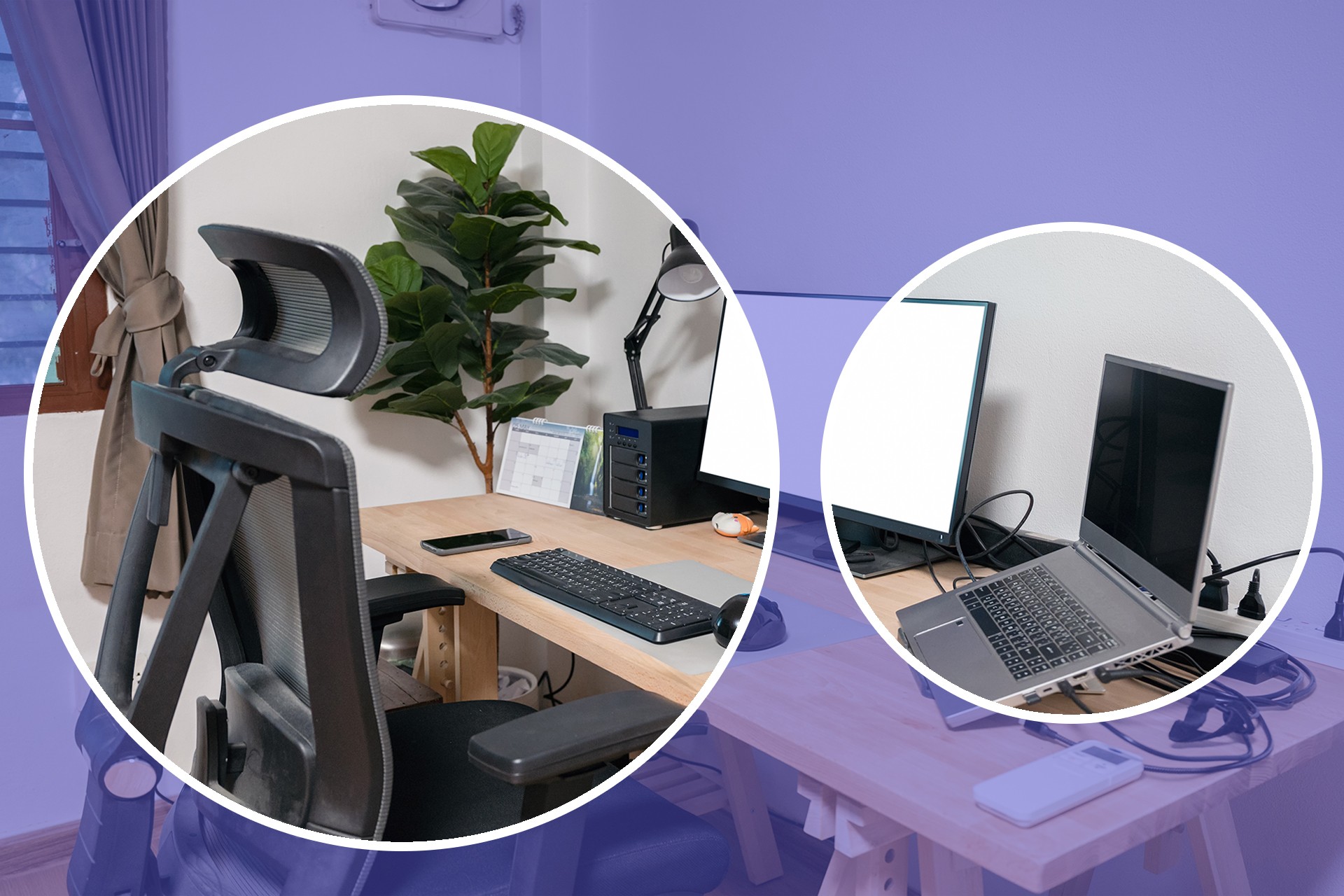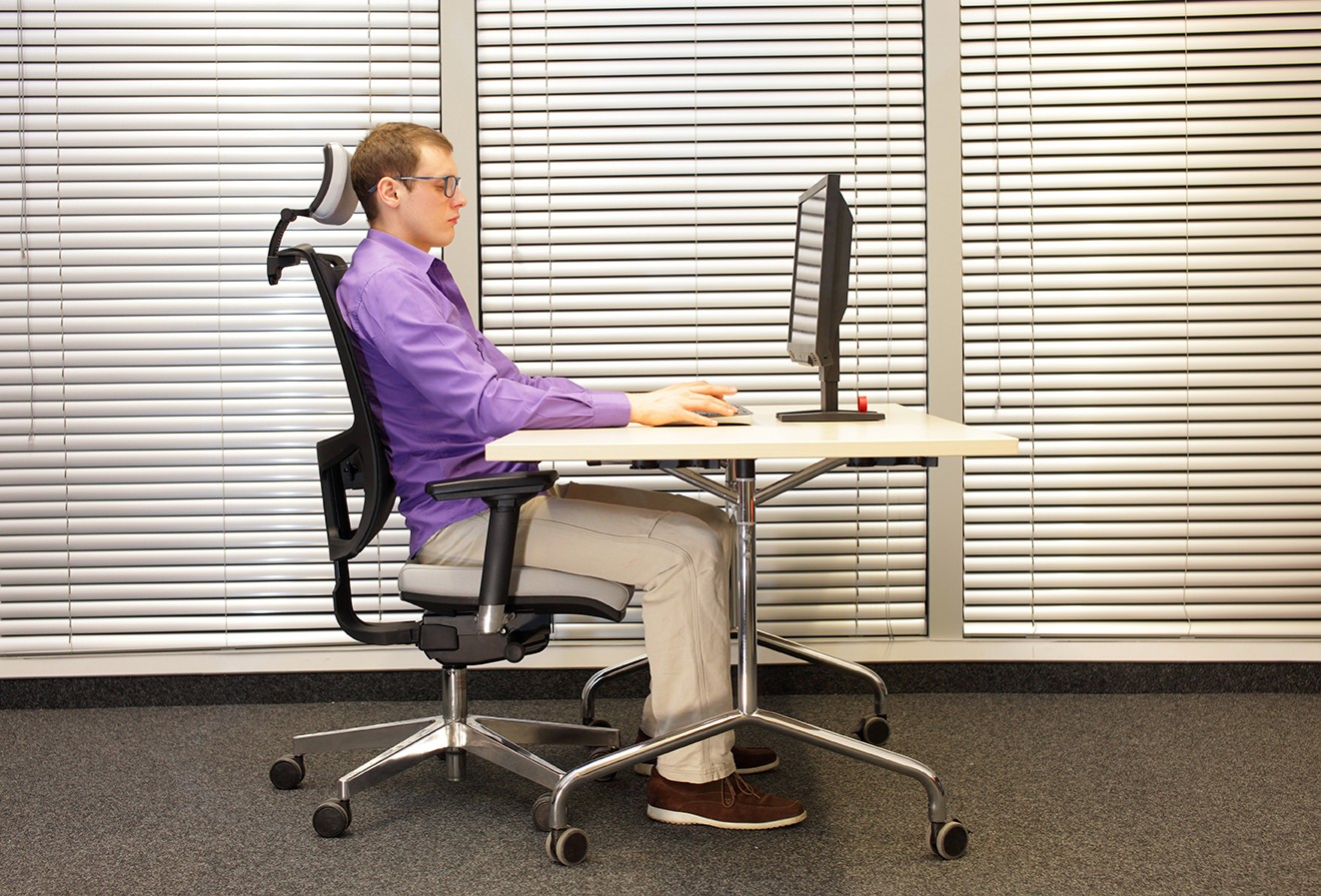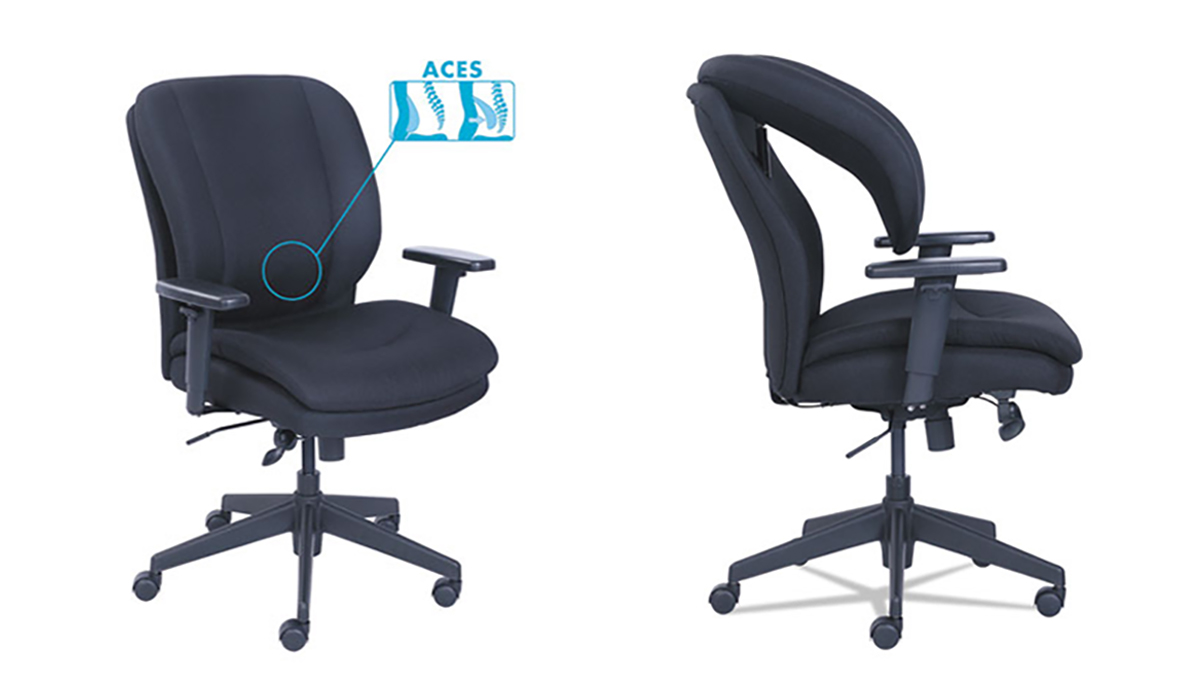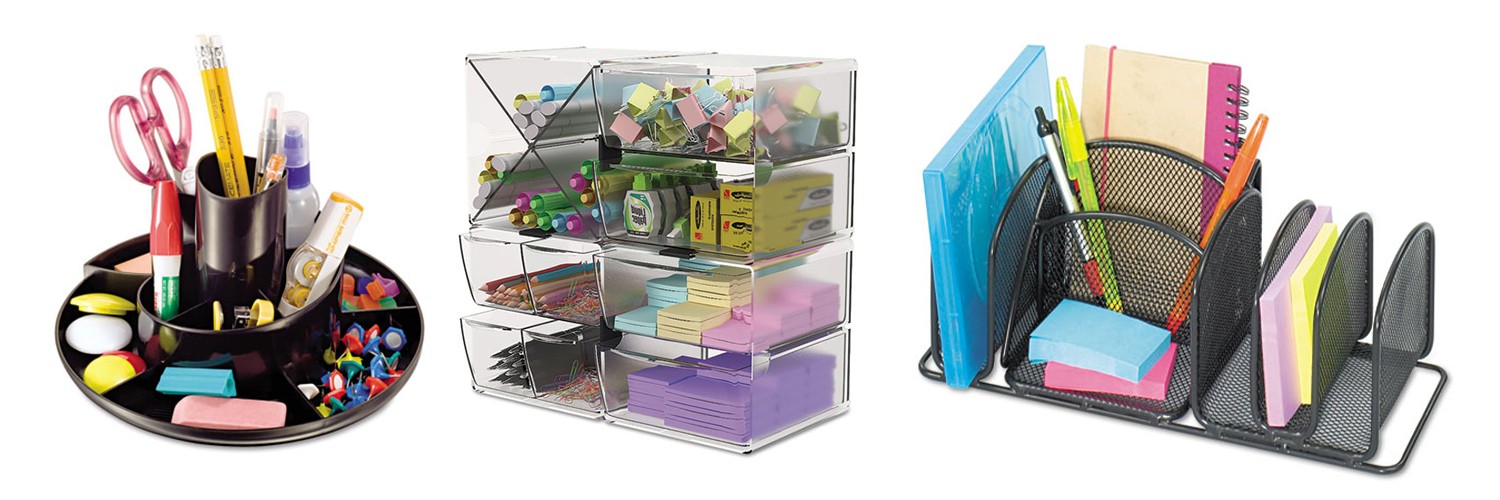

If you’re sitting at a desk right now, check in with your body with a few simple questions.
Chances are, your back could be better, your arms are tired, your neck is strained, and your feet are propped up on the legs of your office chair.
Oftentimes, we sit like this because we feel it takes less “effort” than sitting with good posture, with our arms appropriately bent, with our necks aligned, and our feet solidly planted on the floor. When, in reality, we are putting more strain on our bodies by working this way. How can you design and furnish your workstation to ensure you are putting your physical health first?
First, we’ll start with your desk. Not just the height – we’ll get to that – but how it is laid out. Are you right-handed or left-handed? Depending on your dominant hand, you’ll want to set up your desk for ease, keeping your files and drawers on the side of your primary. By providing your employees with workstation options that are customizable, you are not only improving employee loyalty and retention, but also diminishing the risks associated with physical strain.

Desk height. Your desk should be the appropriate height for you. If you’re tall, you may need an adjustable desk that will help you not only physically but also improve your efficiency. It will reduce mental fatigue, improve blood flow, and increase mental acuity. Offering adjustable sit-stand desks for your employees will not only improve output but also boost morale.

Having the ability to adjust your workstations will not only improve the look of your office, but most modular office furniture is ergonomically built to improve comfort and productivity. These pieces will also allow you to move employee desks in the instances of promotions or departmental fluctuations. Being able to reconfigure your office is important for both physical and mental health.
We spend an average of 6.75 hours a day looking at a computer monitor. That’s nearly 7 hours of potentially straining our necks to look at our screens. Monitors should be approximately 20 inches from your face (depending on the size of the screen, as a larger screen should be further back), and you should be able to look at the screen without having to move your neck from an upright yet relaxed position. If you use more than one monitor, make sure both are at the same height and distance so that you are not straining your body. Use monitor stands, mounts, or other devices to ensure your neck is not being burdened by undue tension.

If your computer is your lifeline, chances are your keyboard and mouse are your helping hands. Your keyboard should be easily accessible while keeping your elbows bent at a 90° angle without splaying your arms out too far from your body. When we do that, we put undue strain on the shoulders. Your mouse should be ergonomically aligned to your hand shape so that you aren’t trying to shift your wrists too much. Try a mouse pad with a wrist rest support or tilted keyboard to keep your wrists healthy and active without strain.

Source: shop.benjaminofficesupply.com
Your seating can make or break your posture. This will depend on whether you have a seated desk, standing desk, or adjustable desk. It will also depend on whether you prefer arm rests or not. Ergonomic seating is a must when it comes to ergonomic office furniture and office design. Whether stationary or mobile, adjustable or fixed, your seating will determine where your feet go. You want to have your feet firmly planted on the floor, keeping your knees at a 90° angle. If your feet cannot reach the floor, you can always use a foot stool to ensure comfort and ease.

Source: shop.benjaminofficesupply.com
Ensuring you have everything you need at your fingertips can keep your desk organized. Organization not only improves function but also form. A cluttered desk can mean a cluttered mind. By keeping your workstation organized, safe, and ergonomic, you can improve form, function, and efficiency.
Looking to start your journey to a more ergonomic workstation?
